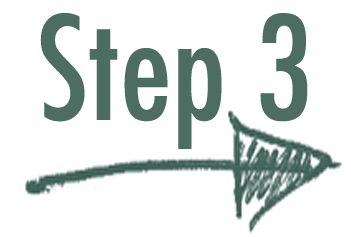“Begin with the End in Mind” – Habit #2 in Stephen Covey’s 1989 book The 7 Habits of Highly Effective People is a valuable mantra for the modern marketer. The “end” for many marketers is a number given by the CEO or leadership such as 20% increase in MQL during Q3, 1,200 attendees to the annual user meeting, or any other quantitative goal. With the numeric goal in focus, each activity can be viewed with a clear vision of the desired outcome even if your initial response is “How am I going to achieve that?” The simple answer is to start with the end in mind and then work backwards.
Quantitative goals will range from MQL, to event attendance, to trial downloads…you name it! During the Great Recession, my responsibilities as head of marketing for North America shifted from finding prospects “ready to buy” to building a strong prospect funnel. Our target audience, structural engineering firms and steel fabricators, had little interest in purchasing a new software solution. Most were struggling to keep their lights on. If they were still open for business, they had most likely reduced their headcount by 25-75%. Their focus included catching up on technology and learning how these new tools could impact their business in the future; in other words, they were interested in expanding their knowledge, not their expenses.
My strategy would now be to position my team as thought leaders and to deliver that “knowledge” while promoting our solutions. This approach would build relationships and result in sales once the firms bounced back. During the 2009 planning, I set a goal to increase our marketing qualified database to 20,000 prospects by the end of the year…and that happened. How? By starting with the end in mind. I knew the recovery would take time so my goal covered four quarters / 12 months / 52 weeks. I had my target market and I knew the product roadmap.* Understanding the TAM (Total Addressable Market) and setting a realistic target market helped put the goal in place.
Here are a few steps that you can take in setting up any campaign.

Step 1: Define your SMART goal
- S – specific
- M – measurable
- A – agreed upon
- R – realistic
- T – time-bound
My favorite example is John F. Kennedy’s address to a Joint Session of Congress on May 25, 1961. During this address, JFK urged Congress to approve spending on the space program. He gives this goal: “this nation should commit itself to achieving the goal, before this decade is out, of landing a man on the moon and returning him safely to the Earth.” Does it contain all these? Yes. And each day anyone working in the space program could easily ask:
- “Did I do something today to help us reach our goal of putting a man on the moon by the end of the decade?”
- “Is this activity leading us closer to putting a man on the moon by the end of the decade?”
If the answer is a clear yes, move forward; otherwise, consider if the activity is worth doing.

Step 2: Put it in writing
Oh, I love this one and it drives others crazy. I believe in the power of “paper and pencil” or today, “document and keyboard” because transferring information out of your mind forces you to get thoughts better articulated. It forces you to be both proactive and defensive towards your activity. A wonderful read is Henriette Anne Klauser’s Write it Down, Make it Happen. This influential book provides powerful examples of how others have used this technique for success.

Step 3: Brainstorm all the possible resources to use to reach the goal
Extremely important because today, there are many routes that can be taken. The maze to get from today to tomorrow grows more and more. In the past, the channels to reach the customer were limited; today, it’s almost limitless. You will need to rely on your “foundation” marketing efforts (article Healthy Marketing Habits) to understand your audience, their unique Buyer’s Journey and the best messages to reach them. For some, this will be primarily digital and for others digital might be a much smaller percentage. Don’t underestimate the power of direct mail for many B2B efforts.

Step 4: Narrow down your sources
Again, using a quantitative approach consider the different sources that will contribute the most to your goal. There will be a mix between your specific audience sources (for the AEC industry it was ENR, Structural Engineer, MSC and Structures) and channels (Google Ads, LinkedIn, SEO, SEM, etc).
There are hundreds of tactics and channels you can use as a part of your marketing strategy. You and your team will have a good idea of most of them unless you are entering an entirely new market or a spanking new start-up, which is a different conversation. This step is all about narrowing them down and choosing a number of specific sources to focus on in order to achieve your goal.

Step 5: Set your targets
Now you have a few sources to focus on that should contribute the most to your goal with minimal effort. What are your expectations for each? What is your target for each? Again, some of the targets here can be pulled from past experience and seasoned with the current market opportunity. Will a mention in Engineering News Record provide a confident rise in web visitors?
I knew that my audience was hungry to learn, interested in the new technology, did not have a travel budget and was willing to spend time with my technical sales team learning about new technology. I crafted a message focused on this and that gave me more confidence that the targets could be slightly higher.

Step 6: Create a timeline
You know the joke: “how do you eat an elephant?” Answer: One bite at a time. Well, that applies here in your timeline. Earlier I broke down the one year to four quarters to 12 months to 52 weeks. For the targets (and these need to be manageable so no more than 5 serious targets) break down the activity. I knew webinars would be a major source to reach the goal. How often to host, what would be the subjects, how to get them to come back for the next one, how to get them to include others in the office or peers in other geographies? This was broken down by week. Same with expectations for your other sources. Go back and see what your anticipated CTR will be as well as conversions.

Step 7: Report your Progress
Report and share your progress – even if you are just sharing it with yourself. That’s right, even if no one in the organization requires this – and there are many tech organizations that don’t pay enough attention to marketing – create these reports anyway. It’s easy, actually. Keeping the spreadsheets up-to-date and checking the key metrics consistently just means that the reporting template is quickly updated. Then, add a bit of your own touch giving a paragraph or two in prose about the learning for that time period. It’s important to share the good the bad and the ugly. In my case, going a full year I saw it all – the good, the bad, the ugly.
Conclusion
As you progress on this journey, you will add more metrics, understand more about the channels and refine your tactics. This simple overview should be a reminder that the goal is not so big when approached in small, calculated steps.
Still sounds a bit overwhelming? If so, let an organization like Hill Country Advisors help. As a reminder, we offer a free phone consultation and will be happy to get you started towards making that goal a reality.
* During 2009 we would enter a slightly new market during this time.
